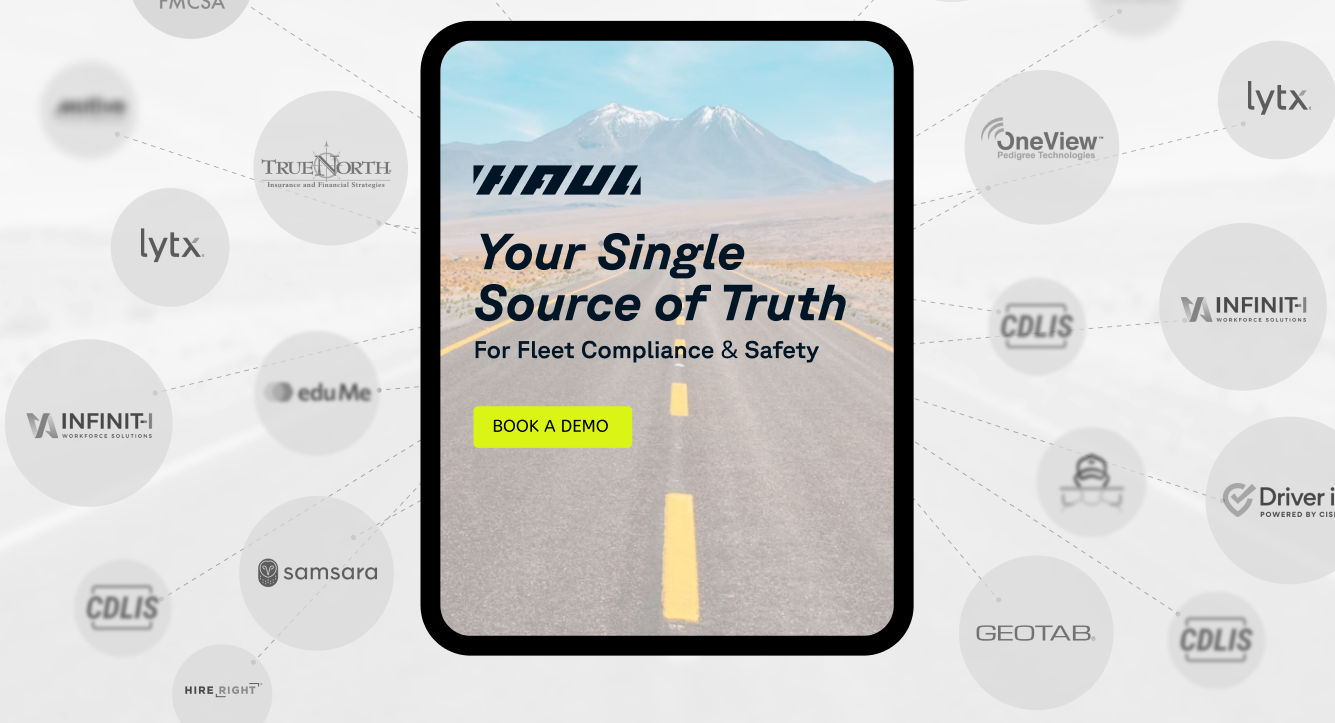Essential DOT Audit Checklist for Compliance

Navigating the complexities of fleet compliance can often feel like traversing a labyrinth. Yet, it's an essential task that ensures the safety and efficiency of your operations. The Department of Transportation (DOT) audit is a crucial aspect of this compliance process, serving as a rigorous assessment of your fleet management practices.
In this article, we will explore a comprehensive DOT audit checklist for 2024, designed to help fleet managers, logistics directors, and risk management officers maintain compliance and enhance operational efficiency. Whether you're a seasoned veteran or new to fleet management, this guide will equip you with the knowledge you need to ensure your fleet is DOT-compliant.
Understanding DOT Audits

by Hannah C (https://unsplash.com/@frauhanne)
DOT audits are evaluations conducted by the Federal Motor Carrier Safety Administration (FMCSA) to ensure that commercial vehicle operators adhere to federal regulations. These audits assess various aspects of fleet operations, including driver qualifications, vehicle maintenance, and safety protocols. As regulations evolve, staying ahead of the compliance curve becomes paramount.
Key Elements of a DOT Audit
- Driver Qualifications and Records: This includes verifying that all drivers have valid commercial driver's licenses (CDL), medical certifications, and a clean driving record. The audit will also inspect driver logs for compliance with hours of service (HOS) regulations.
- Vehicle Maintenance: Auditors will examine maintenance records to ensure vehicles are regularly inspected and repaired. This includes checking for any outstanding recalls or safety notices.
- Safety Protocols: Fleet safety policies, including drug and alcohol testing programs, will be scrutinized. The audit will assess whether your fleet adheres to safety standards and procedures.
- Operational Records: This encompasses everything from fuel tax records to accident reports. Ensuring these records are accurate and up-to-date is crucial for a successful audit.
The DOT Audit Checklist for 2024
1. Driver Qualification Files
Your first line of defense in a DOT audit is maintaining comprehensive driver qualification files. These should include:
- Copy of the driver's CDL
- Medical examination certificate
- Employment application
- Driving record (MVR) checks
- Drug and alcohol test results
2. Hours of Service (HOS) Compliance
HOS regulations are designed to prevent driver fatigue and ensure road safety. Your checklist should cover:
- Electronic logging device (ELD) records
- Driver logbooks
- HOS training records
- Violation reports and corrective actions
3. Vehicle Maintenance Program
A well-documented vehicle maintenance program is critical. Key checklist items include:
- Scheduled maintenance logs
- Repair orders and invoices
- Pre-trip and post-trip inspection reports
- Vehicle inspection reports (annual and roadside)
4. Safety Management Controls
Safety management controls ensure a culture of safety within your fleet. Your checklist should include:
- Drug and alcohol testing policies
- Safety training records
- Accident register and investigation reports
- Hazardous materials handling procedures (if applicable)
5. Recordkeeping and Documentation
Accurate and thorough documentation is the backbone of DOT compliance. Essential records include:
- Financial responsibility documentation (insurance)
- Vehicle registration and permits
- Fuel tax and mileage records
- Driver and vehicle inspection reports
Leveraging Technology for Compliance
In the digital age, technology offers powerful tools to streamline compliance processes and provide real-time insights. Here’s how you can leverage technology to enhance your DOT audit readiness:

Real-Time Data Integration

Invest in fleet management software that integrates data from various sources, providing a centralized platform for monitoring compliance. Real-time data integration allows for immediate alerts on potential compliance issues, enabling swift corrective actions.
Automated Recordkeeping
Automated systems reduce the risk of human error and ensure that records are consistently updated. This includes ELDs for HOS tracking, maintenance scheduling software, and digital document storage solutions.
Predictive Analytics
Utilize predictive analytics to anticipate potential compliance challenges and proactively address them. This technology can analyze patterns in your data to forecast maintenance needs, driver fatigue risks, and other compliance-related factors.
Conclusion: Staying Ahead of Compliance
DOT compliance is not a one-time task but an ongoing commitment to safety and efficiency. By using this DOT audit checklist for 2024, you can ensure that your fleet operations meet federal standards, reducing the risk of penalties and enhancing operational performance.
Remember, compliance is not just about avoiding fines; it's about fostering a culture of safety and responsibility within your organization. By embracing innovative solutions and leveraging technology, you can achieve compliance with confidence and ensure the long-term success of your fleet.
As you prepare for your next DOT audit, keep this checklist as your trusted guide. With thorough preparation and a commitment to excellence, your fleet will not only pass with flying colors but also set the standard for industry best practices.

